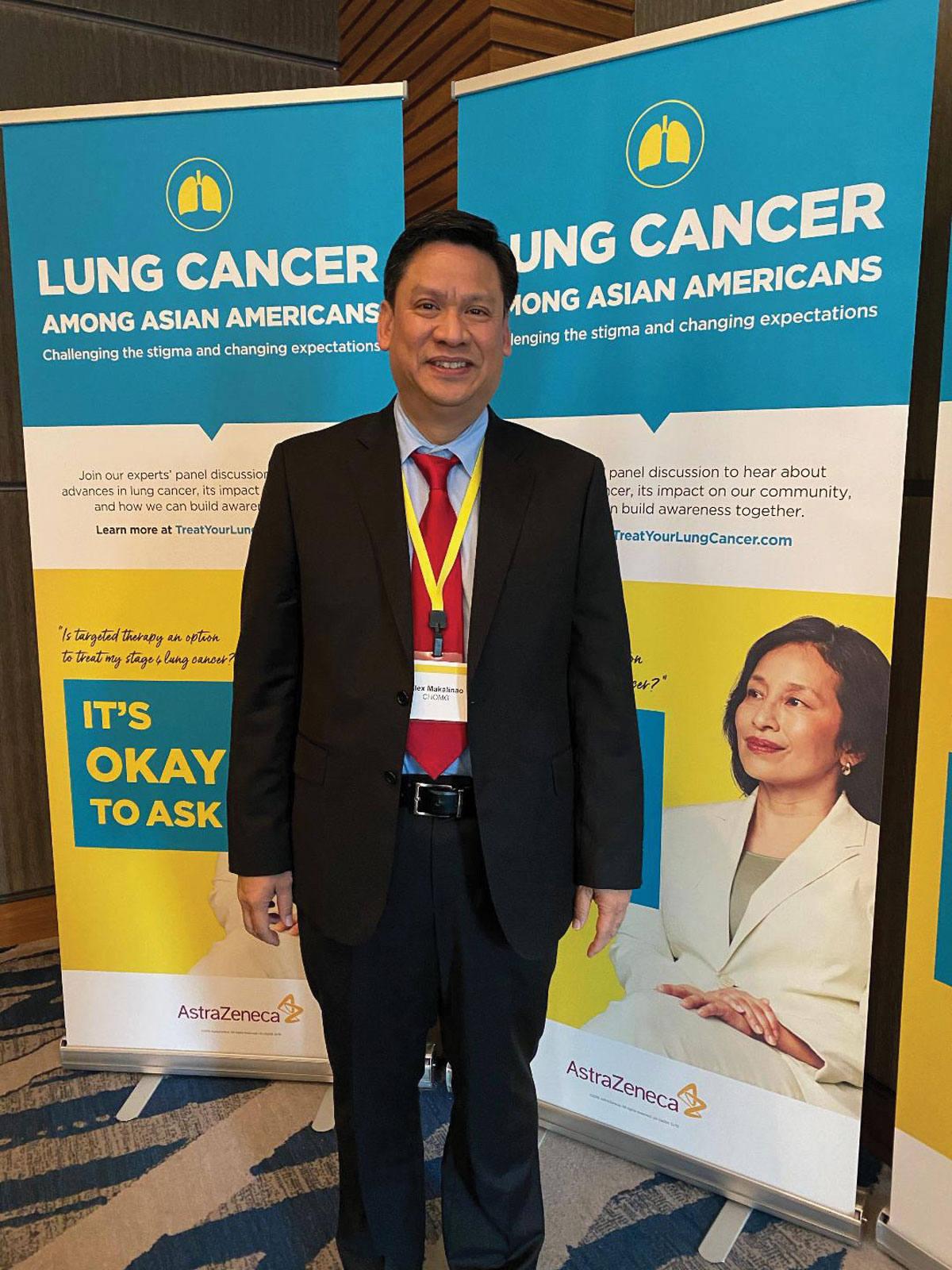
With lung cancer as the leading cause of cancer-related deaths in the United States, there is still a stigma around the disease that prevents patients, especially in the Asian American community, from receiving proper support.
A report from the American Cancer Society in January said that the cancer death rate in the U.S. dropped 29% between 1991 and 2017.
However, lung cancer remains the leading cause of cancer deaths for men and women at nearly one-quarter of all cancer deaths.
The same report found that 34.4% of Asian American and Pacific Islanders — the fastest-growing minority group in the country — had incidences of lung cancer from 2012-2017.

A recent panel of doctors in Los Angeles highlighted that more education and outreach need to be done to reduce the misconceptions around the disease and barriers to care within the Asian American community.
“Lung cancer stigma is why research funding at the national level is not what it should be,” said Maureen Rigney, director of support initiatives at GO2 Foundation for Lung Cancer. “That’s why we haven’t seen a lot of increase in lung cancer survival rates over many, many decades.”
Rigney cited data that 56% of the general public said that people who were diagnosed with lung cancer were “at least partially to blame for their disease.”
“Even perhaps more heartbreakingly, there was a significant increase in patients who said that they felt that their family and friends would have been more supportive if they’ve been diagnosed with a different type of cancer,” she added. “For all us, it’s just really important for us to know about the lung cancer stigma and help to work to eliminate it so that people who are diagnosed are confident that they’re going to receive the same level of care and the same compassion as people diagnosed with other types of cancer.”
Reducing barriers to care
One of the common beliefs around lung cancer is that it is a “smoker’s disease.” Evidence has shown that it is the first health risk conclusively linked to smoking, but it has largely resulted in patients with the disease being personally blamed, even if they do not have a history of smoking.
There is a growing incidence of lung cancer among Asian American non-smokers, panelists noted.
Based on data from patients in Southern California, about 25% Filipino Americans who have never smoked were diagnosed with non-small cell lung cancer (NSCLC), the most common form of the disease, in the early 2000s.
Certain social and cultural factors prevent early detection as well as receiving appropriate care once diagnosed.
In the Asian American community, across the various groups, many are quick to hide their lung cancer diagnosis from family and friends for fear of shame and to not be a burden. Some adult children even hide the diagnosis from their elderly parents or family members in anticipation of the emotional difficulties.
Filipino American oncologist Alex Makalinao said that before talking about the diagnosis and treatment, it’s important to approach care in a culturally sensitive manner and to build trust with patients.
Many Asian American patients have said that language barriers have prevented them from raising concerns or asking questions about lung cancer.
“It’s our culture to protect our parents and our family members…when I come and see them, the families outside are talking to me and telling me not to say anything and it’s very hard for me to convey what the diagnosis is,” Makalinao told the Asian Journal. Speaking to families in Tagalog has been helpful in breaking down the resistance and earn their trust, he found.
“I just have to gain the confidence of the parent or the loved one and when I get that, it’s a lot easier,” he said. “But still, before you could say the ‘C word,’ it could take several visits before you even say it.”
Makalinao added that one of the best ways to raise awareness among patients in the Fil-Am community is through media, whether through TV programs or newspapers.
“When they come to us…patients show us what they read or what they saw in the newspaper and so making them aware that there [are] other ways of treating this cancer is very important,” he said.
Testing and treatment options
Like other types of cancer, lung cancer has several causes, presents itself in different forms, and affects various racial and ethnic groups in distinct ways.
Though symptoms do not typically appear until the lung cancer is at an advanced stage, they include persistent cough, sputum streaked with blood, chest pain, a hoarse voice, worsening shortness of breath and recurrent pneumonia or bronchitis, according to the American Cancer Society.
“Lung cancer is a disease of mutations, where carcinogens and cigarette smoke are responsible for smoking-related lung cancer, or carcinogens in the environment, which is responsible for non-smoking related lung cancer, damage the DNA of a normal bronco endothelial cell, producing a mutation that then drives the growth of that moment in the cell clone,” said Dr. Ron Natale, director of the Lung Cancer Clinical Research Program at the Samuel Oschin Comprehensive Cancer Institute at Cedars-Sinai Medical Center.
He added that studies show Asian Americans appearing to be more sensitive to environmental carcinogens that produce such mutations.
One biomarker associated with NSCLC is an epidermal growth factor receptor (EGFR) gene mutation, which is prevalent among Asians more than any other racial and ethnic group. (A 2017 multinational study found that 52% of lung cancer incidences in the Philippines were due to EGFR mutations.)
When individuals are diagnosed with NSCLC, it’s crucial that they get biomarker testing — either through a blood test or a biopsy that removes tissue from a tumor — to identify the specific disease type, and receive a targeted treatment plan, such a once or twice a day oral pill. Other mutations include ALK, BRAF, NTRK, PD-L1, and ROS1.
“Part of this program is really educating the public that there are good and better therapies out there for lung cancer now. It’s okay to ask your doctors about treatment options and getting tested for molecular alterations,” said Dr. Bing Xia, an assistant professor at the University of Southern California Keck School of Medicine.
In recent years, the development of targeted therapies has helped directly attack cancer cells by attaching to or blocking targets that appear on the surfaces of those cells.
Xia added that in her practice, she has found that patients who take targeted pills are more receptive than when on chemotherapy drugs, which cannot tell the difference between normal cells and cancer cells.
“Patients who take these targeted pills generally do very well. They have, generally speaking, higher efficacy than chemotherapy and generally lower side effects. So patients are very happy with these pills and they feel well when taking them,” she said.
Rigney also noted that taking oral medications has a more positive impact on the quality of life for patients.
“All medications have side effects…but oftentimes, these oral therapies can have fewer effects. So people aren’t tied to their treatment, they can continue to travel, they can continue to live their lives and oftentimes in the way that they would like to as opposed to when they’re going through chemotherapy,” she said.
Though the discussion was supported by biopharmaceutical company AstraZeneca, the panelists did not specifically endorse or mention targeted therapy drugs by name.
However, the company has been running an “It’s Okay to Ask” campaign that is “designed to encourage and empower patients and their caregivers to take a proactive approach in treating lung cancer and to ask their physicians specific questions about their cancer,” Natale said. (Christina M. Oriel/AJPress)






